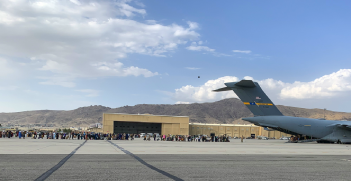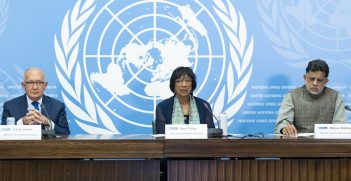Post-Pandemic Migration Is Vital to Australia’s Economic Prosperity

Migration has made a vital contribution to Australia’s economic development over recent decades. Migrants have lifted the level of skills in Australia, facilitated the transfer of knowledge and international connections to Australian workers and businesses, and met around a third of increased skills requirements in the economy.
It is not surprising, therefore, that Australia’s strict COVID-19 border closures weighed heavily on the economy. Around 500,000 temporary migrants left Australia during the pandemic, while it is estimated that Australia missed another 600,000 migrants that would have otherwise arrived. This net impact has been felt acutely across the international education, trades, technology, hospitality, and aged care sectors.
Australia was slow to welcome migrants back to its shores, and the processes to do so have been found wanting with visa wait lists and times ballooning this year. In contrast, other countries such as Canada were quick to send positive signals to migrants throughout the pandemic, setting ambitious permanent migration targets and meeting them.
Australia’s lagging position has now been well recognised. The federal government announced at the Jobs and Skills Summit a plan to address the visa backlog, to boost Australia’s migration program in the short term, and to set the policy guiderails for the long term. In the short term, the total permanent migration visa cap will increase from 160,000 to 195,000 this year, with 142,400 spots for skilled migrants. This is critical to increase the capacity of the system to ease current backlogs and address critical skills needs. The government will also adjust some of the rigidities in the skilled migration system so that businesses can get the skills they need, and migrant workers’ rights are properly protected at the same time.
The government will use a review of the purpose, structure, and objectives of Australia’s migration system to set the parameters for more substantive policy change over the longer term. This is critical if Australia is to have a coherent, globally competitive, and sustainable migration system. Australia’s current temporary skilled migration system has undergone more than 40 reviews and policy changes over the past 25 years, leaving a system that is far from reliable or coherent.
In addition to bringing coherence, the review will need to grapple with how to bring about much needed modernisation of the migration system to keep pace with rapid change in technology and the labour market. This starts with a system that is focused on skills rather than occupational definitions that are far too constraining and cumbersome to update against rapidly evolving skills demand in a contemporary labour market. In line with Committee for Economic Development of Australia’s (CEDA) report, “A good match: Optimising Australia’s permanent skilled migration,” Australia would benefit from a government-regulated online skills-matching platform where pre-vetted prospective migrants and employers can interact to determine skills and job matches. This represents an agile and enduring long-term solution.
This approach could be supported by an appropriate wage threshold or wage monitoring mechanism and trialled within the permanent skilled migration system before being expanded over time. The platform would have the added benefit of providing government with real-time information on emerging skills needs in the economy. Current skills shortages have already seen state governments such as Western Australia move in this direction with their Skilled Migrant Employment Register to support employers and skilled migrants to connect with each other.
Building this platform would require a major step-up in the digital capacity of the migration system, which should also be a focus of the review. The independent review of the Australian Public Service found the Immigration Records Information System, installed in 1989, used in the visa application process, relies on the purchase of second-hand aftermarket hardware components from eBay. The hardware for the system stopped being produced around a decade ago. Increased digitisation done right, complemented by greater administrative efficiency and transparent measurement of performance, is necessary to better meet the expectations of migrants and their Australian sponsors.
Like many regulatory systems, the migration system should also take a risk-based approach to administrative requirements and processing, providing accelerated streams for trusted users of the system. This is no more evident than in the need for a dedicated, streamlined path for intra-company transfers of employees to Australia. This would enable trusted users of the migration system with a strong local presence to bring global executives to Australia to lead major business expansions and build local workforce capability. Such an accelerated pathway would be particularly advantageous in addressing skills shortages in sectors with a strong multinational presence such as technology. It would also bring Australia into line with the United States and United Kingdom, which offer intracompany transfers, while addressing the recommendations of previous Parliamentary Committees.
Australia’s future migration framework must not stop at the border. Also needed are better policies, programs, and support for migrants to live their best life in Australia, through employment and beyond. This involves ensuring the full suite of migrants’ skills are utilised. CEDA research finds that, prior to the pandemic, nearly a quarter of permanent skilled migrants in Australia were working in a job beneath their skill level. This represents a cost of AU$1.25 billion of foregone wages for the permanent skilled migrants who arrived in Australia between 2013 to 2018. Many migrants reported they were being knocked back due to a lack of local experience and networks. Australia needs more programs to build a better bridge for migrants into the Australian labour market and community to make the most of their talents. In such a tight labour market, this is a win-win opportunity.
As disruptive as COVID-19 has proven to be for Australia’s migration program, it has presented an opportunity for a forced reset and recalibration of migration settings. Historically, Australian governments have adapted policies well in response to external shocks. Policymakers must do so again to continue the vital contribution of migration to Australia’s economic development for the decades to come.
Melinda Cilento is CEO of the Committee for Economic Development of Australia.
This article is published under a Creative Commons Licence and may be republished with attribution.





